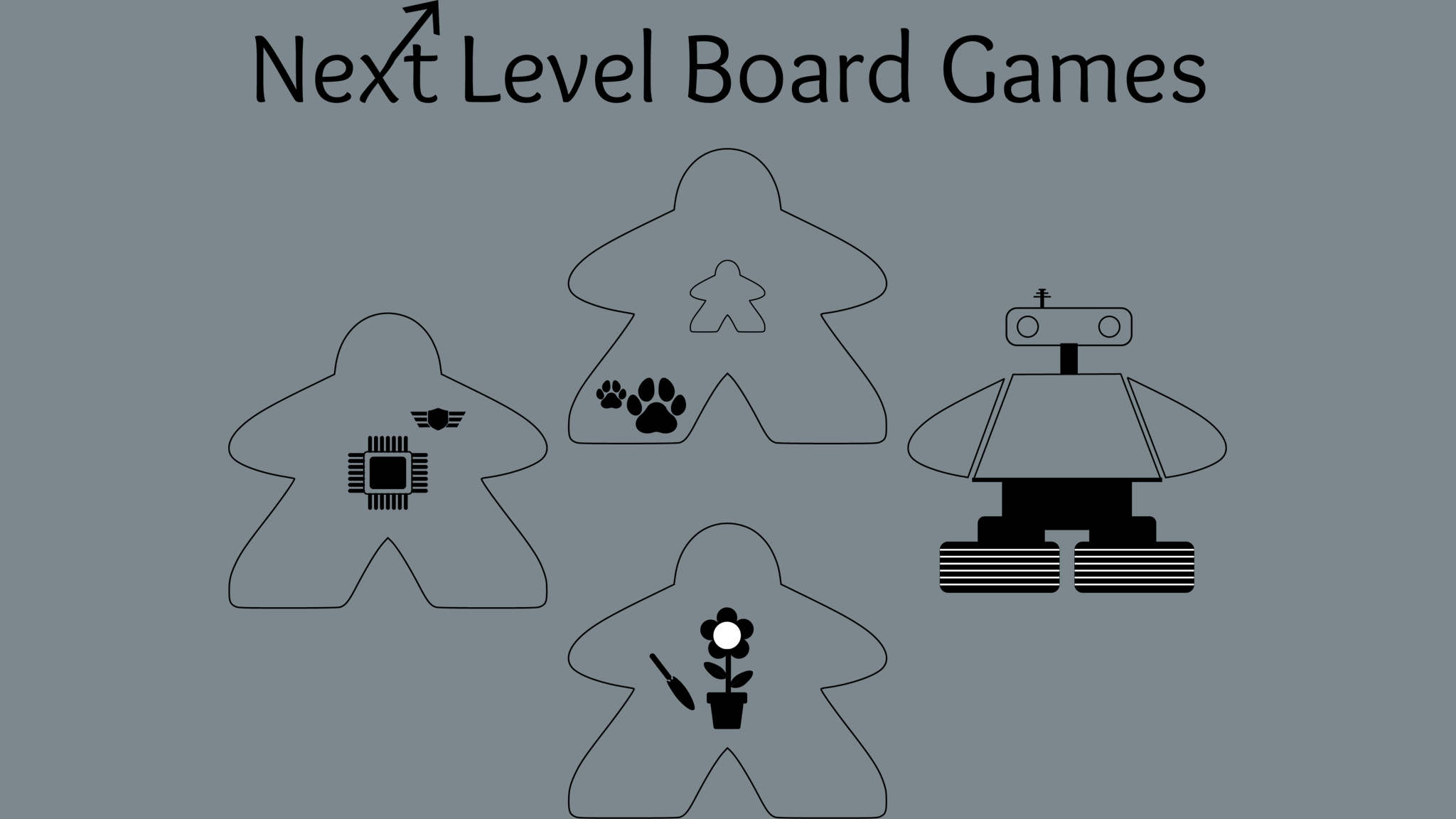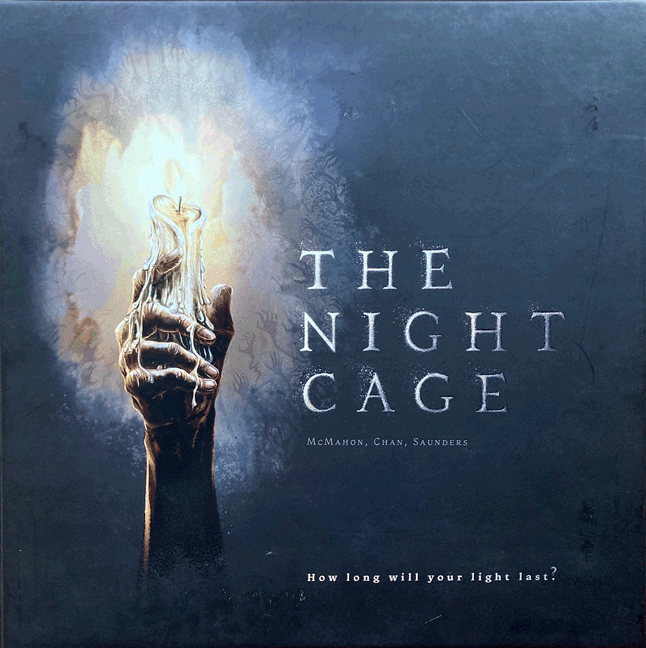The Night Cage is a game published by Smirk & Dagger Games. The premise of the game is for players to take on the role of prisoners in a dark maze. As a cooperative game, each player works to find a key so the prisoners can all meet on a gate tile and escape together. The game end is triggered if all four gates have been lost, if prisoners cannot each collect a key or if all prisoners cannot reach the gate before running out of available tiles. However, if all prisoners escape, the players win!
This post is broken into the following 3 sections, feel free to jump directly to one:
- General summary - consisting of information about overall enjoyment, theme, replayability, and upgrades
- Complexity - consisting of information about the rulebook, setup, player turns, and overall learning curve
- Player turns - consisting of game type, game flow, rule you are likely to miss, and favorite aspect
General Summary
Number of players we had: 3
Our play time (not including setup): 1 hour 15 minutes
Table size needed: Small/Medium (4'-5')
Overall enjoyment

Overall our group really enjoys playing this game. The Night Cage is a cooperative game and in general, we like cooperative games. We also like the theme, which is very dark and has great artwork. Additionally, this game has an unpredictability brought on by the tile laying that generates tension in the best of ways.
The Night Cage is not very hard to learn. One thing that makes it easier to start playing more quickly is that players have only one of two actions to take on their turn: move or stay. Still, The Night Cage is challenging to win because each player must gather a key AND make it to a single gate tile so everyone can escape.
As players move through the grid, new tiles are revealed and placed orthogonally next to their prisoner token. Any tiles that fall outside of this small area next to any of the players are forever lost. This means a player can decide to go back to the space they were on in a previous turn, but they will still have to reveal new tiles unless there was another player keeping those tiles "lit" in the darkness.
This means the maze is constantly changing and 100% unpredictable. Additionally, as players move they burn through tiles and if they run out of tiles before they are able to gather all the keys and get to the gate, they lose.
We find the natural challenges created by being too close together - monsters potentially attacking multiple players and losing more tiles, versus being further apart and risking having one player reveal several keys, is perfect. These rules force players to continually engage with the game so they can make the most strategic decision on their turn each time.
If we had to pick one thing that frustrated us about this game it is that you need to pay close attention to the instructions for the different types of tiles during setup. Specifically, be careful choosing the starting tiles versus the remaining tiles based on the number of players and game mode.
Theme

The theme of this game is dark and everything about the game board, player pieces and tokens follow the theme very well. The artwork is intricate yet scary and gives the feeling of hopelessness. The box cover, the bottom box and all the box edges, the rule book, the game board, the tile holder, the tiles and the monster pieces have been designed to match the theme.
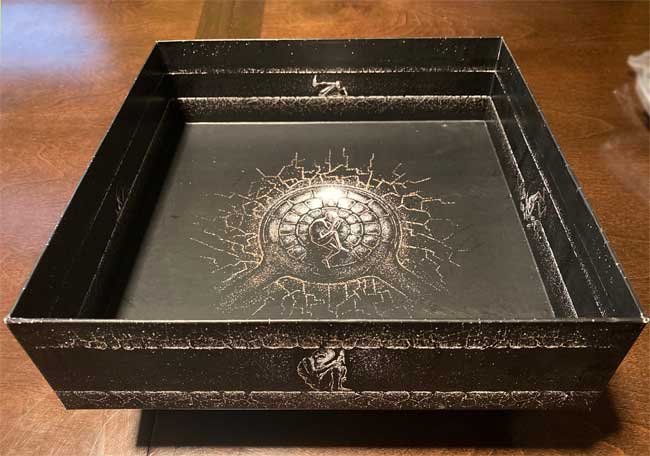
We honestly love how dark the theme of this game is, though I would not recommend it for anyone who might be troubled by this type of theme. The first time we played this game was on Halloween and we had such a good time getting into the dark theme. Even if you don't love a darker theme, I think people will appreciate the effort that has gone into the artwork as well as the game play mechanisms.
Replayability

This game has a decent amount of replayability for a few main reasons. First, each game is going to be very different simply because the game tiles are revealed in a completely random order. There is no way to know when a gate, key tile, or wax monster will appear. Each tile after the eight starting tiles is completely randomized and there is no way of knowing what lies ahead.
Second, in addition to the regular setup, there are two additional monsters that can be used to play a more advanced game. Introducing Pit Fiends and/or Keepers definitely makes for a more challenging game.
Lastly, there are several mechanisms for increasing the difficulty of the standard and advanced game if you want a greater challenge. These include:
- Removing a key tile, gate tile, or both from the game. (Standard game)
- Limiting communication between players to only those who are in a passageway together. (Standard game)
- Adding The Pathless tiles, or The Dirge, a colossal monster. (Standard and Advanced games)
Upgrades
I am not aware of any upgrades for this game.
Complexity
Rule book
The rule book is well organized and does a good job identifying all aspects of the game. While the rule book might seem slightly involved, it is mostly because there are several examples of game play with enlarged images showing how movement works, how monsters attack, and how various other situations affect game play. This includes both standard and advanced game play.
Lastly, it is worth mentioning that the back page of the rule book has an overview of game play.
Setup
Setting this game up is fairly easy and takes about 15 minutes if you have all of the different types of tiles separated. Set aside the starting tiles before gathering and mixing the remaining tiles based on your game mode - regular or advanced. Stack these tiles in the burning candle designed tile holder and add the starting tiles to the top.
Place the game board on the correct side based on the number of players with the discard board next to it. Next each player takes a prisoner status card, one prisoner and one nerve token, and lastly, a starting tile. If there are less than four players, players will share any additional prisoners as each game has a minimum of four prisoners. Place keys and extra nerve tokens on their respective corners of the board and you are ready to begin.
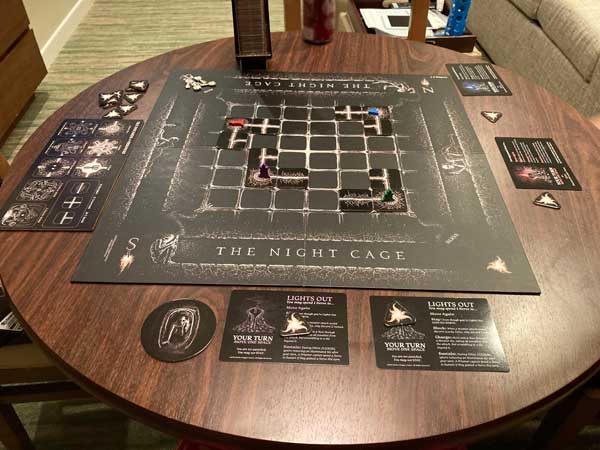
Turns
Turns are not overly complex. On your turn you have the option of moving orthogonally one square, or staying where you are and collecting a nerve token. Keep in mind, even if you choose to stay, you must reveal one tile, so while staying can reduce the number of revealed tiles on a player turn, it is not free.
Overall learning curve
The overall learning curve of this game is not overly high. Players can take one of two actions each turn and since the game is cooperative, players are helping each other throughout the game. Having said that, it is important to note that while the game can be learned fairly quickly, it is challenging to win!
Player Turns
Play type
The Night Cage is a cooperative, symmetrical tile placement and grid movement game. Players move along the grid, using tiles they reveal on their turns, in an effort to capture keys and get to a gate so they can make their escape.
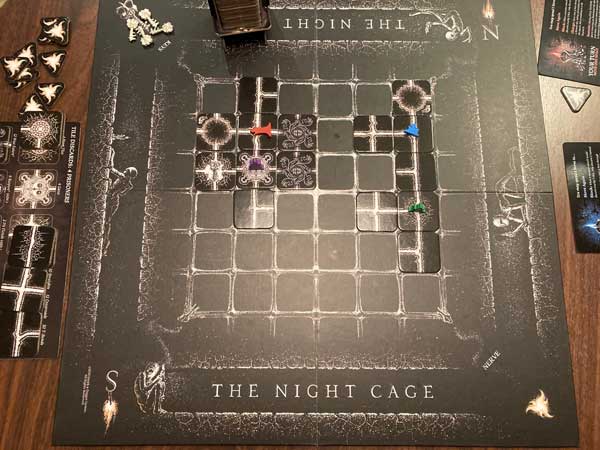
Game flow
The flow of this game is very fluid since it is a cooperative game. On each player's turn, based on what you are faced with, players talk out the best ways to move everyone's game forward and have the highest chance for each player to gain a key. Sometimes a player may stay knowing they will take a hit from a monster on their next turn because it allows another player to collect a key that would otherwise be lost. Working together to find the best solution to the puzzle of this game makes it go more quickly because all players are thinking about strategy and playing the game at all times.
Rule you are likely to forget/miss
The one rule you are likely to forget or miss is that monsters cannot attack through a wall or non-passageway. There were a few times we spent time trying to figure out how to take the least damage and once it came time for the monster to attack we realized we were not at risk because there was no linking passageway!
Note: This is only applicable to wax monsters. Advanced monsters, like The Pathless, operate differently and you will need to read the instructions on what restrictions they have before incorporating them into a game.
The only other thing that I think it would be helpful to mention is to be diligent when removing tiles that have been lost due to movement. This can be easy to get sloppy about and it does make a huge difference - so make it a habit early on.
Favorite aspect
Aside from the horror theme, which we are a huge fan of, our favorite aspect about this game is how the board never ends and the maze changes constantly. In keeping with the theme of being lost in a maze, the board edges wrap around to the other sides and top/bottom in such a way that it never really ends. This carries the theme and makes the game even more challenging as players must really be paying attention at all times and not get trapped into a mindset of "that's the edge of the board". Also, the fact that the path changes as soon as you leave it makes for a very interesting game.
The Night Cage is a great game for anyone who likes a darker, horror style themed game as well as those who like cooperative games, strategy games, and games with great natural tension. We will definitely keep this game for a long time!
